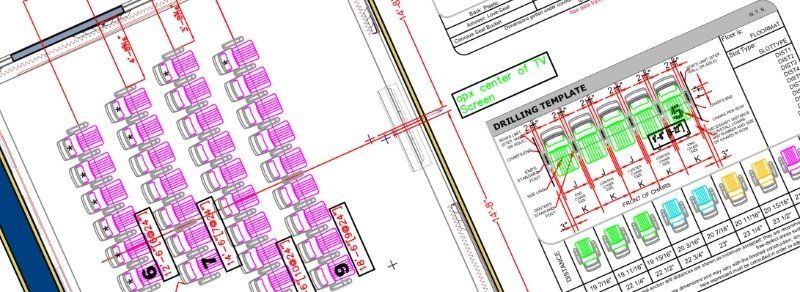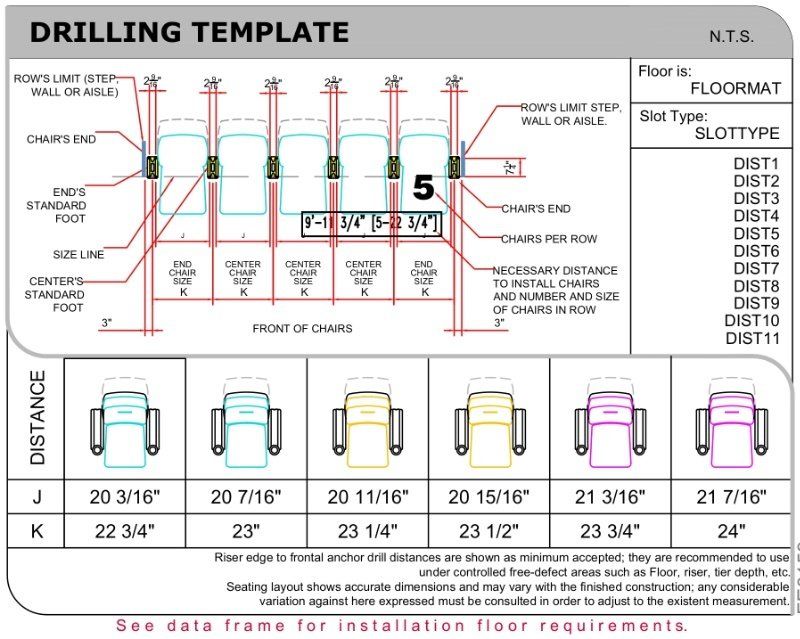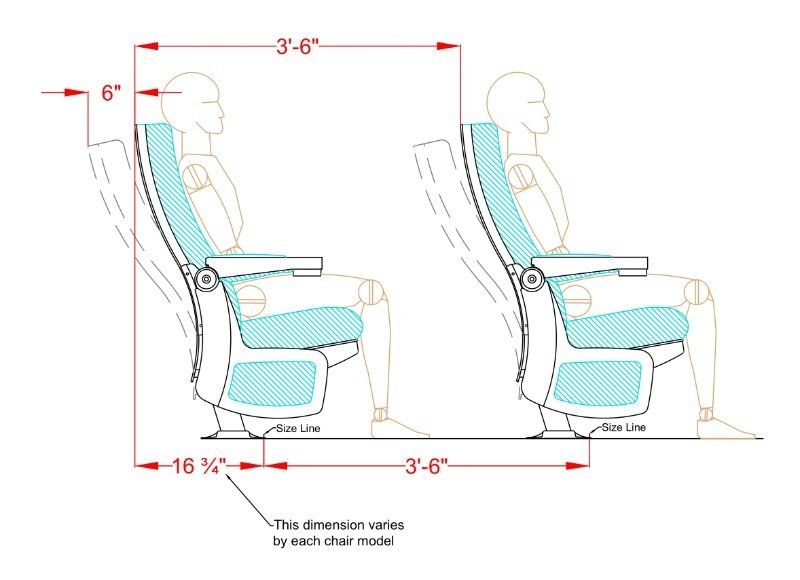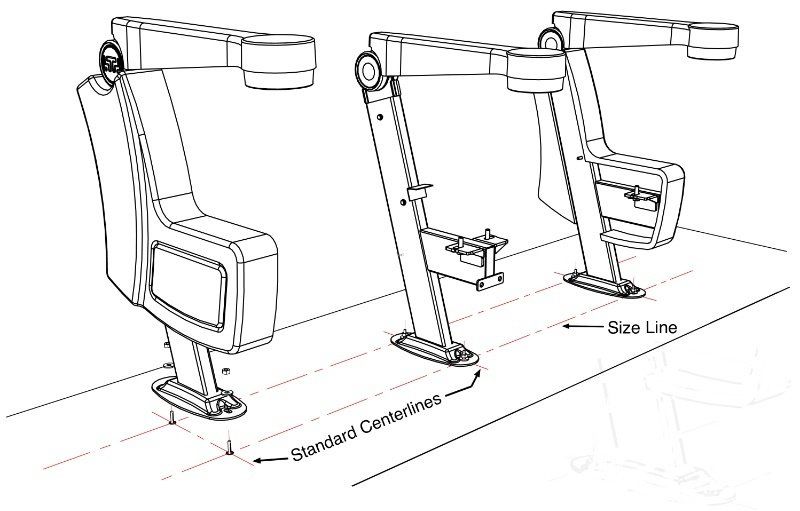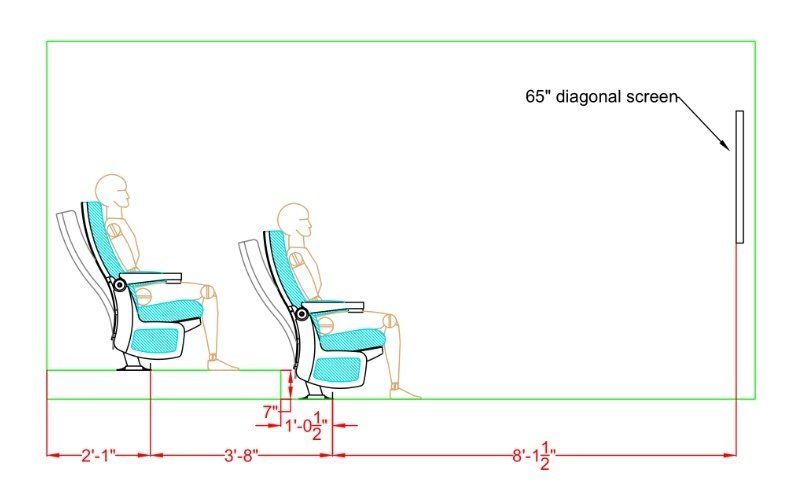Q:
Tell me about
Booth Seating.
A: We are more than just another internet retailer. We have been in the business of selling, installing, and refurbishing
theater seats since 1968. That is decades of actual hands-on experience with theater seating. We have been offering our chairs to home theater customers since 1994, and we have had a web presence since 1996. Our goal is to pass our experience on to you so that you get the chair you want and your installation is as simple as possible.
Q:
How comfortable are these chairs?
A: Chair design has undergone a bit of a renaissance. There have been many improvements in the rocking mechanisms and, more importantly, in back design. The result is a chair that is at once anatomically correct and comfortable. Our chairs are designed to keep you in an ideal and comfortable viewing position. The large overstuffed loungers that are ubiquitous on-line are great for taking a nap. Our
theater seats are great for watching a movie! Many of our customers have called us to say how comfortable they thought the chairs were. We are sure you will agree.
Q:
How durable are these chairs?
A: These are
commercial theater chairs that have be subjected to independent testing by
Intertek . They are built to withstand the sort of intense use they will see in theaters. In your home theater they will provide you with many years of trouble-free comfort and service. Whether in a commercial environment or your home, our chairs are backed by a 5-year warranty and require minimal maintenance.
Q:
What fabrics are available?
A: In short, anything! Our standard fabric is called
Marquesa Lana. It is a woven fabric that is very durable, easy to clean, and is available in about 50 colors. We offer the entire fabric line to our home theater customers, not just a few colors! We also offer synthetic leathers and top grain leathers. We have even used cowhide for a customer in Texas! Also, you can supply your own fabric. This is often done when working with an interior designer or architect. You can find links to the color options on the web pages for the individual chairs.
Q:
How do I choose my fabric color?
A: You can select the fabric color from the on-line resource, or we will happily mail a fabric booklet to you. Our preference is to mail the booklet to you so there is no confusion about the color or the quality of the fabric. Once you have the booklet, you can compare the swatches to your wall coverings and carpet under the light source that is in your room. This will help you eliminate any questions about color rendition.
Q:
What fabrics are available?
A: In short, anything! Our standard fabric is called
Marquesa Lana. It is a woven fabric that is very durable, easy to clean, and is available in about 50 colors. We offer the entire fabric line to our home theater customers, not just a few colors! We also offer synthetic leathers and top grain leathers. We have even used cowhide for a customer in Texas! Also, you can supply your own fabric. This is often done when working with an interior designer or architect. You can find links to the color options on the web pages for the individual chairs.
Q:
How do I choose my fabric color?
A: You can select the fabric color from the on-line resource, or we will happily mail a fabric booklet to you. Our preference is to mail the booklet to you so there is no confusion about the color or the quality of the fabric. Once you have the booklet, you can compare the swatches to your wall coverings and carpet under the light source that is in your room. This will help you eliminate any questions about color rendition.
Q:
How long does it take to get the chairs?
A: All orders are custom orders. You choose each option on the theater chair, and you aren't limited to just a few fabric colors. Production time for theater seating is usually 6 - 8 weeks followed by about 10 - 12 days in transit. This can vary throughout the year. Orders placed after September as we approach the holiday season can experience additional lead time.
Q:
How do I determine the width of a row of chairs?
A: The chair widths listed on our web site are measured from the centerlines of the armrests. To find the outside-to-outside width of a row of rockers, multiply the number of chairs in your row by the width of the chair, then add 6".
Q:
How far apart should I space the rows of theater chairs?
A: We recommend 42" minimum to 44" between rows of
rockers. If you have the room you can expand this up to 46" - 48". This extra spacing between chairs is often used in assisted living facilities when additional space for walkers is needed. For rows of
fixed-back chairs we recommend 36" - 40". It should be noted that when we specify row spacing we are making measurements from identical points on the rows, usually the front anchors on the standards. This is sometimes called row spacing or "back-to-back spacing." Here are a couple of examples:
Q: Can you further explain what the Size Line is?
Q:
Where should I place my rows?A: There are two things that will impact the placement of your chairs. First is your screen size. The general rule is that the optimal viewing distance is about 1.5 times the diagonal screen dimension. So, the optimal viewing distance from a 60" diagonal screen would be about 90". Therefore, your first row of chairs would be placed about 90" from a screen of this size. However, this is just a general rule. Many people find they are comfortable with a slightly closer viewing distance and some wish to be further away. In addition, if you will be installing chairs in a larger media room, you may want to move your first row slightly closer to the screen so your subsequent rows are not so far away. Before you install your chairs, it may be beneficial to watch a few shows at different distances from your screen to see what you prefer.
Second, is the placement of your back chairs relative to a rear wall. If you are placing an aisle behind your back row, then you can simply determine how much aisle space you want and place your chairs accordingly. However, if your back row of chairs is being placed against a rear wall, it is important that the chairs be installed at the proper minimum distance from the wall. This is especially important with rockers so that the full range of rocking motion is allowed. Most rockers should be placed about 25" - 26" forward of a wall. Please note that this distance is measured from the wall to the front anchor (Size Line) on the chair standard and will vary slightly depending on the chair model. Please contact us for the specific measurement for your chair.
Q:
Should I build risers, and how should they be built?A: Most home theater customers will install risers to get the proper sight lines. The height of the risers depends on a couple of things. Naturally, a low room ceiling will limit how high the risers can be built. Also, the higher your screen is off the floor, the lower your risers can be. For most applications you will find that framing your riser with 2x4s or 2x6s is sufficient. It is important, though, to top the risers with TWO sheets of 3/4" plywood. Since chairs installed on risers must be anchored with lag screws, it is important to have a sufficient thickness of wood for the lag screw to bite into. One sheet of plywood is simply not enough for long term stability. Please feel free to call us to discuss the specific details of your installation.
Q: I'm putting carpet on my risers. Should I put the carpet down before installing the chairs?
A: Yes. Lay the carpet, then install the chairs. Our installation instructions will provide you with all the information you will need to install the chairs, but here is a quick tip if you are using a berber or commercial carpet. When you have determined where the standards will be placed, use a felt tip pen to mark on the carpet where the lag screws or anchors will be drilled. Remove the standard, and use a short length of 1/2" conduit to punch out a hole in the carpet where you have marked or use a carpet knife to cut out a 1/2" x 1/2" square of the carpet where the anchor will be drilled. You don't need to be precise. Creating this cut in the carpet will ensure that you don't pull a run in the carpet when you drill for the lag screws or anchors. This step is not necessary if you are using a cut pile carpet. If you are using lag screws on wood, it will be helpful to drill a pilot hole into the wood for the lag screw.
Q: Where do I get the mounting hardware for the chairs?
A: We provide all mounting hardware and installation instructions with each order. Plus, we will provide all the phone support you need.
Q: Why do you not offer on-line ordering?
A: We have considered this. However, we realize that buying and installing theater chairs is not like buying a sweater. We know you have questions, and we are happy to answer them. We didn't see the point of having you place your order on-line only then to have to call us with your questions.
We enjoy speaking with our clients, so feel free to call us or send us an email.

